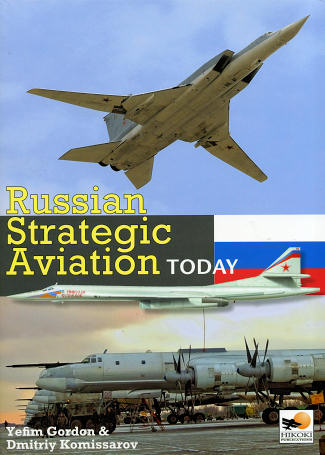 Last
year, I reviewed the previous book on
Soviet Strategic Aviation. This one picks up where that other one left off; with
the end of the Cold War. The end of the Cold War was not kind to the former
Soviet Union. With most of Eastern Europe removing the shackles of Soviet rule
and the fall of communism, the former republics within the Soviet Union also
fell away from Moscow and looked to controlling their own destiny. Most of the
breakaway was non-violent and it had a rather deleterious effect on what was now
Russian readiness and its ability to fight in a major war.
Last
year, I reviewed the previous book on
Soviet Strategic Aviation. This one picks up where that other one left off; with
the end of the Cold War. The end of the Cold War was not kind to the former
Soviet Union. With most of Eastern Europe removing the shackles of Soviet rule
and the fall of communism, the former republics within the Soviet Union also
fell away from Moscow and looked to controlling their own destiny. Most of the
breakaway was non-violent and it had a rather deleterious effect on what was now
Russian readiness and its ability to fight in a major war.
For one thing, many of the military bases that were to be
used against the West were located in what were now soverign countries. Ukraine
and Kazakhstan were the major nations that held Strategic Aviation assets.
Kazakhstan had a number of Bear bombers, which, thanks to good relations with
Russia, they traded in for tactical fighters and other tactical aircraft.
Ukraine, however, wanted to sell the big TU-160 Blackjack bombers and there was
difficulty reaching agreement. In fact, the vast majority of TU-160s were in
Ukraine at the time of the fall, leaving only a handful in Russia proper. It
didn't help when the US offered to pay Ukraine to allow them to cut up big
bombers, which the Ukraine Air Force was unable to afford to keep operational
anyway. Eventually, many of the planes were sold back to Russia, but not after
several, one with less than 100 flight hours, were cut into scrap. This story
itself is one of much intrigue and political wrangling.
Cutting bombers into scrap was going on in Russia as well as
the older Tu-22 Backfires were reduced to components. Strategic Aviation had
trouble keeping crews trained due to lack of funds as well and became a much
smaller force. This force basically had Tu-22M Backfire, Tu-95 Bear, and Tu-160
Blackjack bombers with IL-76 tanker/transports and a variety of smaller
aircraft. Though several new Tu-160s have been built, today, this is pretty much
what the Russian Bomber forces consist of. One would have to say they are a
somewhat smaller force than the US with its B-1, B-2, B-52, KC-135 and KC-10
force, but they are still a force with which to be reckoned, especially as the
current regime in Russia is looking to upgrade that force.
In this book we look at all of the strategic bombers
and support aircraft of the current Strategic Aviation arm. This includes a look
at the history of the force since 1990 and all the bases from which these planes
fly. There are several separate sections to deal with the weapons used and some
special events, like the various hot spots these planes have been used in as
well as other special events. This book is much more image intensive than the
previous edition, and includes a large number of color profiles of the various
aircraft. This is of interest to modelers as many of the bombers have taken on
names and special badges.
It is a book that I found quite interesting and from which I
learned a great deal. I'm, sure you will as well.A book I can easily recommend to you.
July 2010
Review book courtesy of
Specialty Press ,
where you can order your copy of this and many other superb aviation and
modeling books. Visit their website at the link above or call them at
1-800-895-4585
,
where you can order your copy of this and many other superb aviation and
modeling books. Visit their website at the link above or call them at
1-800-895-4585
If you would like your product reviewed fairly and quickly, please contact
me or see other details in the Note to
Contributors.
 Last
year, I reviewed the previous book on
Soviet Strategic Aviation. This one picks up where that other one left off; with
the end of the Cold War. The end of the Cold War was not kind to the former
Soviet Union. With most of Eastern Europe removing the shackles of Soviet rule
and the fall of communism, the former republics within the Soviet Union also
fell away from Moscow and looked to controlling their own destiny. Most of the
breakaway was non-violent and it had a rather deleterious effect on what was now
Russian readiness and its ability to fight in a major war.
Last
year, I reviewed the previous book on
Soviet Strategic Aviation. This one picks up where that other one left off; with
the end of the Cold War. The end of the Cold War was not kind to the former
Soviet Union. With most of Eastern Europe removing the shackles of Soviet rule
and the fall of communism, the former republics within the Soviet Union also
fell away from Moscow and looked to controlling their own destiny. Most of the
breakaway was non-violent and it had a rather deleterious effect on what was now
Russian readiness and its ability to fight in a major war.